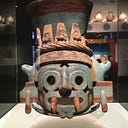Jack, here's a really good book on paleoclimatolgy. I refer to it often in my work.
Understanding Climate Change and its implications. My personal book recommendations
Under a Green Sky: Global Warming, the Mass Extinctions of the Past, and What They Can Tell Us About Our Future by Peter Ward (2007)
There have been five major “Mass Extinction Events” when over 75% of all life on the planet perished.
· Ordovician-Silurian Extinction: 440 million years ago.
· Devonian Extinction: 365 million years ago.
· Permian-Triassic Extinction: 250 million years ago.
· Triassic-Jurassic Extinction: 210 million years ago.
· Cretaceous-Tertiary Extinction: 65 Million Years Ago.
Unfortunately, the only one that most of the public knows about is the last one. Because it was the one that killed the dinosaurs.
Ward is a paleontologist and the book is a deep dive into paleontology, particularly the field of paleoclimate research. While it is dense in places Ward does his best to make it as accessible as possible to the average reader.
He wants people to read this book and understand what the world will be like in a few hundred years if we trigger a runaway greenhouse climate shift.
Ward writes, “I’m scared as hell, and I’m not going to be silent anymore! This book is my scream, …Is [mass extinction] happening again? Most of us think so….Thus this book, words tumbling out powered by rage and sorrow, but mostly fear, not for me, but for my children and their descendants.”
Here is Ward’s description of what “life” was like during the Triassic greenhouse mass extinction to give you an idea of where Earth could be headed in the event we get a runaway greenhouse effect going and temperatures rise 10–12 degrees Celsius. Which, while it is an extreme worst case, could actually happen. Perhaps more easily than we think. Here is what paleontology tells us that world would be like:
“No wind in the 120-degree morning heat, and no trees for shade. There is some vegetation, but it is low, stunted, parched. Of other life, there seems little. A scorpion, a spider, winged flies, and among the roots of the desert vegetation we see the burrows of some sort of small animals — the first mammals, perhaps.
The largest creatures anywhere in the landscape are slim, bipedal dinosaurs, of a man’s height at most, but they are almost vanishingly rare, and scrawny, obviously starving. The land is a desert in its heat and aridity, but a dune less desert, for there is no wind. The land is hot barrenness. Yet as sepulchral as the land is, it is the sea itself that is most frightening.
Waves slowly lap on the quiet shore, slow-motion waves with the consistency of gelatin. Most of the shoreline is encrusted with rotting organic matter, silk-like swaths of bacterial slick now putrefying under the blazing sun. We look out on the surface of the great sea itself, and as far as the eye can see there is a mirrored flatness, an ocean without whitecaps.
Yet that is not the biggest surprise.
From shore to the horizon, there is but an unending purple color — a vast, flat, oily purple, not looking at all like water, not looking like anything of our world. No fish break its surface, no birds or any other kind of flying creatures dip down looking for food. The purple color comes from vast concentrations of floating bacteria, for the oceans of Earth have all become covered with a hundred-foot-thick veneer of purple and green bacterial soup.
At last there is motion on the sea, yet it is not life, but anti-life. Not far from the fetid shore, a large bubble of gas belches from the viscous, oil slick-like surface, and then several more of varying sizes bubble up and noisily pop. The gas emanating from the bubbles is not air, or even methane, the gas that bubbles up from the bottom of swamps. It is hydrogen sulfide, produced by green sulfur bacteria growing amid their purple cousins.
There is one final surprise.
We look upward, to the sky. High, vastly high, overhead there are thin clouds, clouds existing at an altitude far in excess of the highest clouds found on our Earth. They exist in a place that changes the very color of the sky. We are under a pale green sky, and it has the smell of death and poison. We have gone to the Nevada of 200 million years ago only to arrive under the transparent atmospheric glass of a greenhouse extinction event, and it is poison, heat, and mass extinction that are found in this greenhouse.”
Anyone who ever says that we do not have to worry about CO2 levels in the atmosphere because they fluctuate naturally all the time and it has worked out “just fine”, should be forced to read this book.
CO2 keeps the planet warm enough for life to flourish on our planet but when it gets too high it causes mass extinction events. We need to pull back before we trigger the next one.
